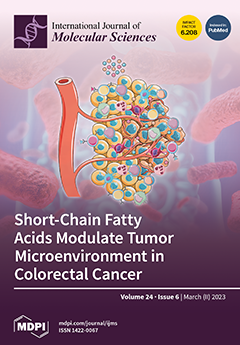Psoroptes ovis, a common surface-living mite of domestic and wild animals worldwide, results in huge economic losses and serious welfare issues in the animal industry.
P. ovis infestation rapidly causes massive eosinophil infiltration in skin lesions, and increasing research revealed that eosinophils might play
[...] Read more.
Psoroptes ovis, a common surface-living mite of domestic and wild animals worldwide, results in huge economic losses and serious welfare issues in the animal industry.
P. ovis infestation rapidly causes massive eosinophil infiltration in skin lesions, and increasing research revealed that eosinophils might play an important role in the pathogenesis of
P. ovis infestation. Intradermal injection of
P. ovis antigen invoked massive eosinophil infiltration, suggesting that this mite should contain some relative molecules involved in eosinophil accumulation in the skin. However, these active molecules have not yet been identified. Herein, we identified macrophage migration inhibitor factor (MIF) in
P. ovis (
PsoMIF) using bioinformatics and molecular biology methods. Sequence analyses revealed that
PsoMIF appeared with high similarity to the topology of monomer and trimer formation with host MIF (RMSD = 0.28 angstroms and 2.826 angstroms, respectively) but with differences in tautomerase and thiol-protein oxidoreductase active sites. Reverse transcription PCR analysis (qRT-PCR) results showed that
PsoMIF was expressed throughout all the developmental stages of
P. ovis, particularly with the highest expression in female mites. Immunolocalization revealed that MIF protein located in the ovary and oviduct of female mites and also localized throughout the stratum spinosum, stratum granulosum, and even basal layers of the epidermis in skin lesions caused by
P. ovis. r
PsoMIF significantly upregulated eosinophil-related gene expression both in vitro (PBMC: CCL5, CCL11; HaCaT: IL-3, IL-4, IL-5, CCL5, CCL11) and in vivo (rabbit: IL-5, CCL5, CCL11, P-selectin, ICAM-1). Moreover, r
PsoMIF could induce cutaneous eosinophil accumulation in a rabbit model and increased the vascular permeability in a mouse model. Our findings indicated that
PsoMIF served as one of the key molecules contributing to skin eosinophil accumulation in
P. ovis infection of rabbits.
Full article






